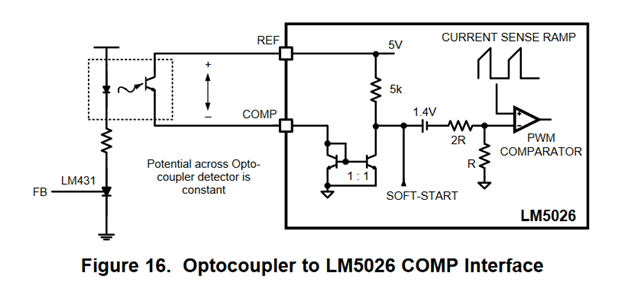Other Parts Discussed in Thread: LM431
Hi All!
I have few questions regarding compensation in LM5026 and would be grateful if you could help explain it.
1. What does this COMP input impedance given in the datasheet refer to and could you please explain its significance?

2. On what basis the controller determines to go into pulse skipping mode at no load? What factors determine, the slope, period, and amplitude of the pulse skipping mode?
Thank you!
Best Regards
Samir



